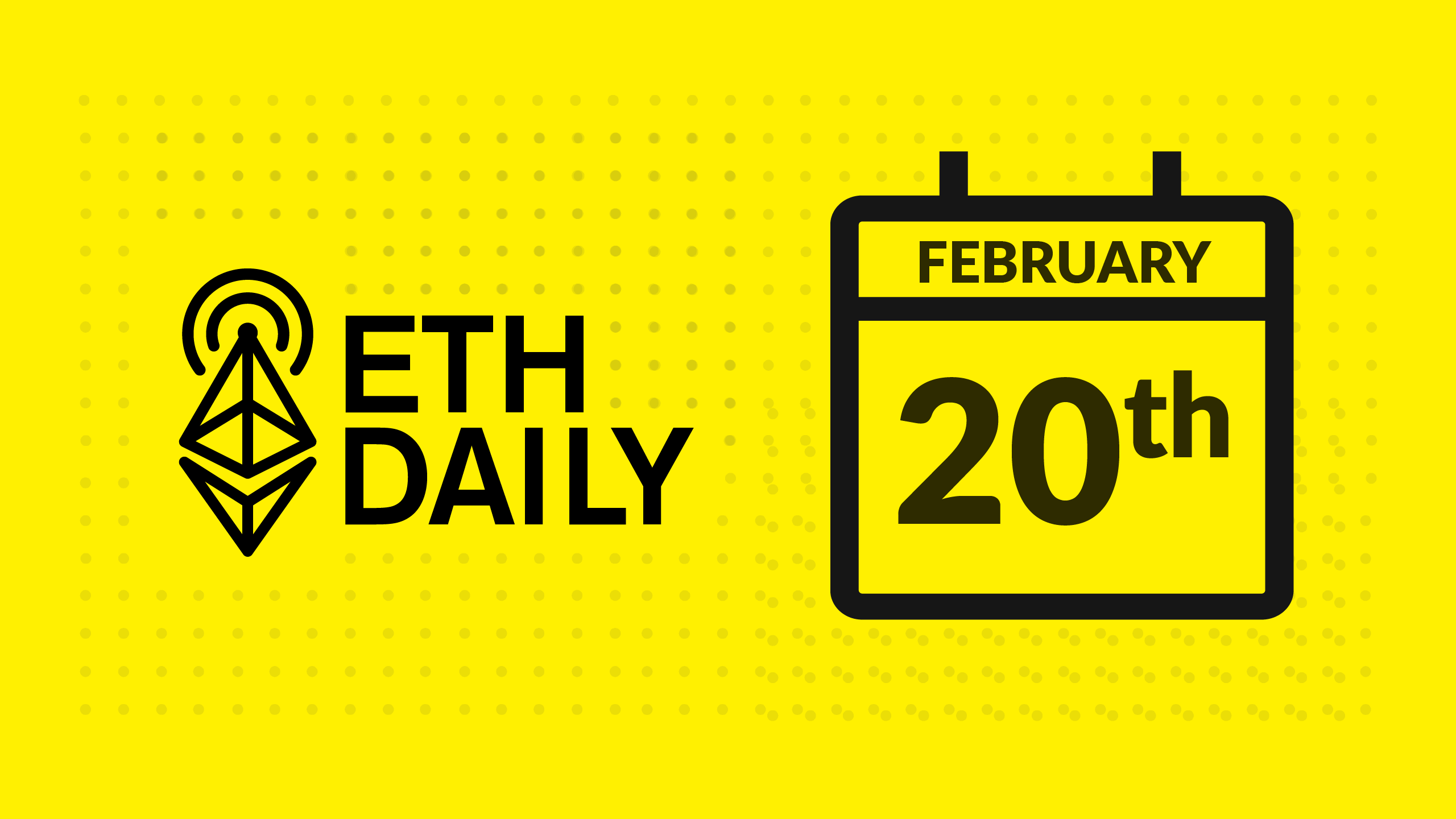EigenLayer Releases Public Whitepaper
Monday, February 20, 2023

Quick Take
- EigenLayer releases its public whitepaper.
- Ethereum developers schedule the Shapella upgrade on Sepolia.
- Bravos releases its multi-signer on testnet.
- LUSD is now live on the Aave V3 Ethereum market.
Get the original hardware wallet (affiliate link).

EigenLayer Releases Public Whitepaper
EigenLayer, a re-staking solution, released the first public version of its whitepaper. The paper includes core ideas for the first iteration of the protocol as well as ideas for middleware modules for MEV and sequencing. A discussion forum was also created for community feedback ahead of a mainnet deployment later this year.
EigenLayer allows Ethereum stakers to secure other networks by directing their staking withdrawal address to a conditional contract. Stakers earn an additional yield for securing other networks, however, Eigenlayer can slash the original L1 stake for dishonest actions. The protocol also features a DA solution for rollups called EigenDA.
Bravos Releases Multi-Signer
StarkNet smart contract wallet provider Bravos released its multi-signer, a tool that allows users to secure their wallet using 2/3 signers in lieu of a single seed phrase. The mechanism uses a device enclave, a biometric, and a passcode as signers. To execute a transaction, a signature from two of the three signers is needed.
Once the multi-signer is enabled, the seed phrase is erased from a user’s wallet and no longer becomes accessible. Braavos aims to abstract seed phrases with the use of multi-signer-enabled smart wallets. The feature can be now enabled from the Braavos browser extension or the Braavos mobile app v3.6.5.
Shapella Upgrade Scheduled For February 28th
Ethereum developers scheduled the Shapella upgrade on the Sepolia testnet at epoch height 56832. Sepolia is expected to hit the epoch at about 4:00 AM UTC on February 28th. Node operators on Sepolia are encouraged to update their client to the latest Shapella-ready release. An upgrade on Goerli is planned for next month.
Shapella is a catch-all phrase that describes Shanghai and Capella upgrades. Shanghai enables validators to withdraw their staked ETH from the Beacon Chain, aka consensus layer, back to the execution layer. Five EIPs will also be implemented with Shanghai including warm coinbase and deprecate selfdestruct. The upgrade also includes changes to Ethereum’s Engine API.

Ye Zhang On Building For Ethereum
Scroll co-founder Ye Zhang published a post sharing key lessons learned while building its zkEVM. Zhang says its developments have been open-source from the beginning and compares the approach to competing projects, which build in private and then open-source once built. He also highlighted community-driven development on its zkEVM.
Zhang says that building open-source bears a trade-off between having more contributors and slow development. He also believes that rollups no longer need to adapt to one-way changes for L1. Instead, they should participate in EIPs that drive changes to L1, such as EIP-4844. Zhang says he aims to push forward a current end goal on Ethereum’s roadmap to snark all of Ethereum.
LUSD Now Live On Aave V3
USD-pegged stablecoin LUSD is now live on the Aave V3 Ethereum market with a supply cap of 3 million and a borrowing cap of 1.2 million. Users can now supply LUSD to earn roughly 1.5% APY or borrow LUSD at a 2.88% variable APY. LUSD is over-collateralized by ether and is soft-pegged between $1.00 and $1.10. If the stablecoin loses it’s soft-peg, arbitrageurs are incentivized to purchase or redeem LUSD to bring it back to peg.

